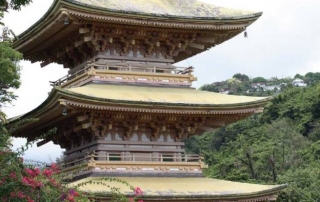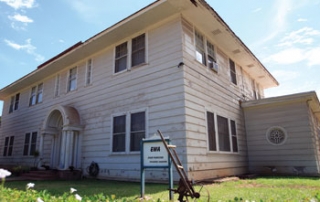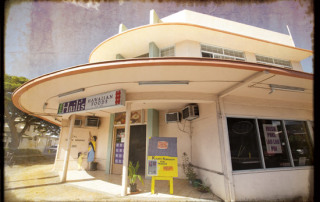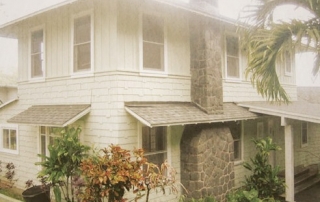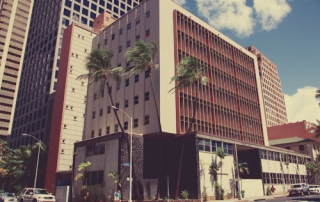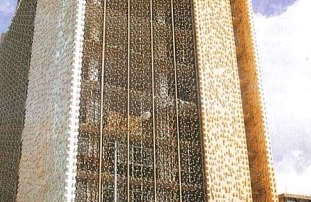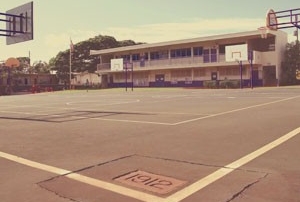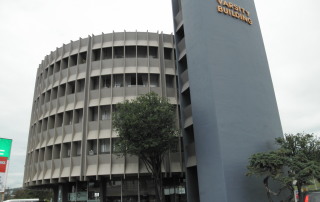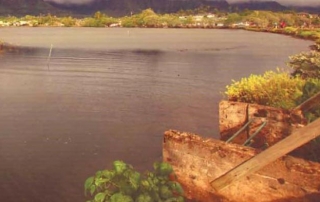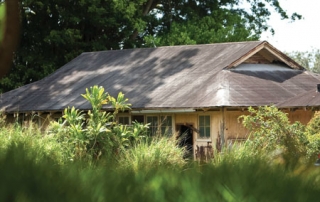Sanju Pagoda and Kinkaku-Ji Temple (2006)
Photos: Courtesy of Rae Huo Article Written By: Michael Keany, HONOLULU Magazine What is it? One of the finest examples of traditional Japanese architecture in Hawai‘i, the Sanju Pagoda in the Kyoto Gardens of Honolulu Memorial Park is also, believe it or not, the largest pagoda in the world. Architect Robert Katsuyoshi modeled it after the Minami Hoke-ji Temple in Nara, Japan, except 1-1⁄2 times larger, using concrete construction instead of the traditional wood to allow it to be used as a columbarium, along with the neighboring Kinkaku-ji Temple. In 2004, the pagoda was listed on the National Register of Historic Places. What threatens it? Twenty years of neglect. Over time, the neoprene roofing material has sprung leaks, exposing the reinforced concrete rafters to weakening moisture and decay. “[The neoprene] was supposed to be the best thing ever, but it turned out to be not so good, “says architect Lorraine Minatoishi Palumbo.“The eaves are in jeopardy right now, in bad condition and very heavy. At any point, one of those eaves could fall down. If one falls, it falls on the next, and the building would most likely collapse. It could happen pretty darn soon.” What can be done? Until recently, the situation had been complicated by a lawsuit over the leader-ship of Kyoto Gardens Park, the nonprofit entity in charge of fund-raising. The nonprofit’s assets were frozen pending a ruling on its rightful board of directors: a group of niche and plot owners, or City Councilman Rod Tam and Nu‘uanu businessman Vic Hejmadi. Fortunately, a settlement was reached last month that will allow regular grounds maintenance to begin again, but it will likely take $2 million or more to reconstruct the pagoda’s eaves and [...]


